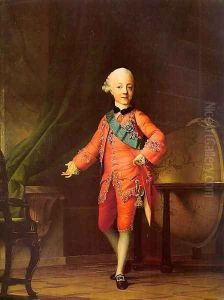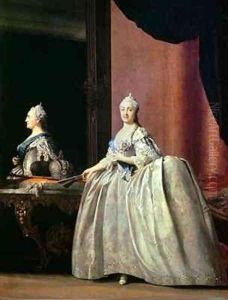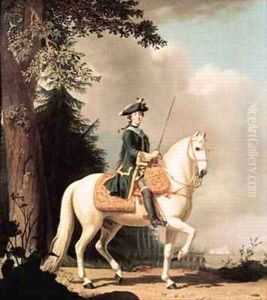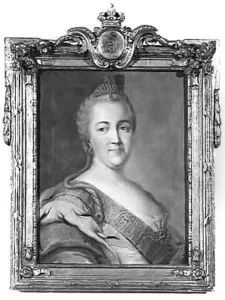Vigilius Erichsen Paintings
Vigilius Eriksen (or Vigilius Erichsen) was a Danish portrait painter during the 18th century, born in 1722 in Denmark. He is particularly known for his work during the reign of Catherine the Great in Russia, where he became a prominent figure at the imperial court. His artistic journey began in his homeland, but his talent soon propelled him onto a larger stage.
Eriksen's early life and education in the arts are not extensively documented, but it is known that he received his foundational training in Denmark. He later traveled to Paris to further his studies, which was a common practice for artists of that period seeking to refine their skills and gain exposure to the French art scene, which was a leading cultural center in Europe at the time.
In 1755, Eriksen arrived in St. Petersburg, Russia, at the behest of the Russian court. He was initially summoned to paint a portrait of Empress Elizabeth and subsequently became a court painter. His work impressed the Russian nobility, and he became particularly favored by the future empress, Catherine the Great. Eriksen's portraits of Catherine are some of his most celebrated works, capturing her in various regal poses that emphasized her status and authority.
During his time in Russia, Eriksen's style was characterized by its adherence to the Baroque tradition, with a particular focus on realism and detail. His portraits are noted for their meticulous attention to the textures of fabrics and jewels, as well as the lifelike depiction of his subjects. Eriksen's skill in portraying the opulence of the Russian court and its figures made him a sought-after artist among the nobility.
Despite his success in Russia, little is known about Eriksen's personal life or his activities outside the realm of his professional work. He served the Russian court until his death in 1782. After his passing, Eriksen's reputation as a distinguished portraitist lived on, and his works continue to be appreciated for their historical value and artistic merit. His paintings can be found in various museums and collections, serving as a testament to his skill and the rich cultural exchanges between Denmark and Russia in the 18th century.



